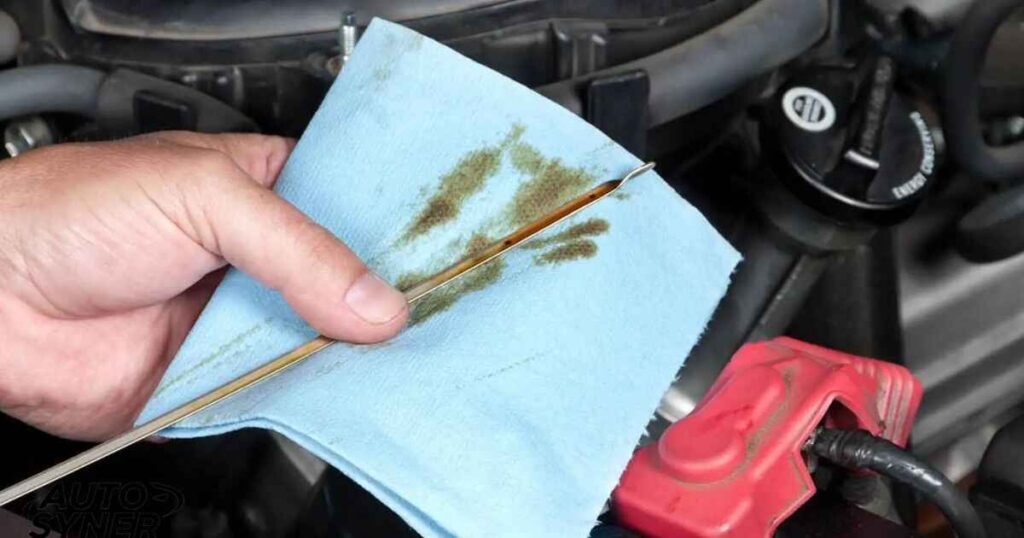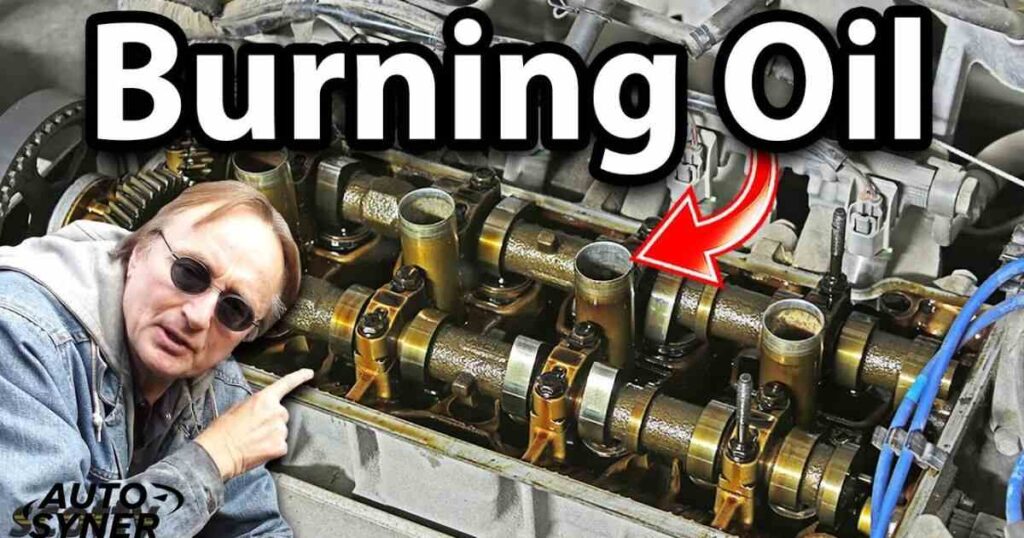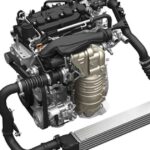Burning oil is a common and frustrating issue for many vehicle owners, often leading to higher maintenance costs and potential engine damage if left unaddressed. When your car consumes oil faster than normal, you might notice declining oil levels between changes or blue smoke coming from the exhaust.
For engines experiencing this issue, switching from 5W30 to 5W40 oil can be a practical solution. The thicker viscosity of 5W40 offers improved sealing and enhanced protection for worn engine components while ensuring proper lubrication.
This guide delves into the causes of oil consumption and explains why and when switching to a higher viscosity can help, drawing insights from experts and real-world user experiences.
Understanding Oil Viscosity Basics

Oil viscosity represents how easily oil flows through your engine. Think of it as the thickness or resistance of the oil. Modern engines require specific oil viscosity for optimal performance and protection.
What Do Oil Grade Numbers Mean?
The “W” in 5W30 or 5W40 stands for Winter. The first number (5) indicates how the oil flows in cold temperatures. A lower number means better cold-weather flow. The second number (30 or 40) shows the oil’s thickness at normal engine operating temperature (212°F/100°C). Since 2010, most vehicle manufacturers have shifted toward lower viscosity oils for better fuel efficiency.
The Key Differences Between 5W30 and 5W40
Here’s how these oils compare at operating temperature:
| Property | 5W30 | 5W40 |
| Viscosity Range | 9.3-12.5 mm²/s | 12.5-16.3 mm²/s |
| Temperature Range | -25°C to 25°C | -25°C to 35°C |
| Oil Film Strength | Good | Better |
| Fuel Economy | Better | Good |
5W40 maintains a thicker oil film and provides better protection in high temperatures. This makes it particularly effective for engines experiencing wear or operating in warmer climates.
Signs Your Engine is Burning Oil
Oil burning typically starts gradually. Blue-gray exhaust smoke, especially during acceleration or after idle, indicates burning oil. Most engines from 2010 onwards should use less than one quart of oil between changes. If you’re adding oil more frequently, your engine is likely burning oil.
Diagnosing Oil Consumption Issues
Start by measuring oil consumption accurately. Mark your dipstick when the oil is full and check it every 500 miles. Record the amount of oil added. The average acceptable oil consumption rate is 1 quart per 3,000 miles. Oil leaks leave visible traces under your vehicle, while burning oil produces blue smoke. Professional mechanics can perform compression tests to determine the exact cause of oil consumption.
Why Consider Switching to 5W40
When engines age or operate in demanding conditions, they need extra protection. 5W40 oil offers this additional security through its enhanced viscosity properties.
Technical Benefits
5W40 oil creates a stronger protective barrier between moving engine parts. Since 2015, studies have shown that engines using 5W40 experience up to 20% less wear in high-temperature conditions. The thicker oil film seals worn piston rings more effectively, reducing oil consumption and exhaust smoke. This higher viscosity also maintains better oil pressure in engines with bearing wear.
High Mileage Considerations
Engines over 75,000 miles develop specific needs. Internal clearances increase through normal wear, seals harden, and compression may decrease. 5W40 oil addresses these issues by:
| Mileage Point | Common Issues | How 5W40 Helps |
| 75,000 miles | Seal hardening | Better seal conditioning |
| 100,000 miles | Increased clearances | Thicker oil film |
| 150,000+ miles | Compression loss | Improved ring sealing |
Making the Switch: Practical Considerations
Always verify compatibility with your vehicle before switching oil grades. Recent studies from 2020-2023 indicate positive results in high-mileage engines.
Manufacturer Recommendations
Most manufacturers allow 5W40 as an alternative oil grade, especially in warmer climates. However, check your owner’s manual first. Recent models (2018-2024) may have specific requirements due to emissions systems. Warranty coverage typically remains valid if using approved oil grades for your region.
Cost Analysis
5W40 oil typically costs 10-15% more than 5W30. However, the long-term savings can be significant:
| Factor | Monthly Cost Savings |
| Reduced oil consumption | $15-25 |
| Extended engine life | $20-30 |
| Fewer repairs | $30-50 |
Best Practices for Implementation
Following proper procedures ensures a successful transition to 5W40 oil.
The Transition Process
Start with a complete oil system flush to remove old oil residue. Change both oil and filter, using a high-quality filter rated for higher viscosity oil. Monitor oil pressure and temperature for the first 500 miles after switching. Check oil levels every 250 miles initially. Most engines adapt to the new oil grade within 1,000 miles.
Additional Maintenance Steps
Combine the oil change with engine cleaning treatments. Modern engine cleaners (2023 formulations) help remove deposits that contribute to oil consumption. Consider specialized seal conditioners if your engine has over 100,000 miles. However, avoid using multiple additives simultaneously as they can interfere with the oil’s designed properties.
Read This Blog: How to Clean Oil Off Engine: The Complete Guide to Engine Degreasing and Maintenance
Long-Term Results and Expectations
The success of switching to 5W40 oil becomes evident through systematic monitoring and documentation of your engine’s performance over time.
Performance Monitoring
Track your engine’s response to 5W40 oil using a detailed maintenance log. Studies from 2020-2023 show engines switching to 5W40 typically show improvement within 3,000 miles. Document these key measurements:
| Monitoring Point | Normal Range | Warning Signs |
| Oil Consumption | 1qt/3000mi | >1qt/1000mi |
| Oil Pressure | 40-60 psi | <30 psi |
| Engine Noise | Minimal | Increasing |
| Exhaust Color | Clear | Blue/Gray |
Most engines show a 40-60% reduction in oil consumption after switching to 5W40. Keep all service records to track these improvements over time.
Also Read This Blog: Everything You Need to Know About the Regen Light on Your Diesel Vehicle
Oil Quality Considerations
Modern synthetic oils offer significant advantages over conventional oils. Recent testing in 2023 revealed these performance differences:
| Oil Type | Protection Level | Cost per Mile | Lifespan |
| Full Synthetic | Excellent | $0.08 | 7,500+ miles |
| Semi-Synthetic | Good | $0.06 | 5,000 miles |
| Conventional | Basic | $0.04 | 3,000 miles |
Leading brands like Valvoline MaxLife and Mobil 1 High Mileage have specialized formulas for engines over 75,000 miles. These oils contain extra seal conditioners and cleaning agents that help maintain engine health. Full synthetic 5W40 oils provide the best protection and longest service life, especially in engines with known oil consumption issues.
Frequently Asked Question
Can I switch back to 5W30?
Yes, you can switch back to 5W30 if 5W40 doesn’t meet your expectations. Ensure a complete oil change with filter replacement. However, before switching back, monitor your engine for at least 3,000 miles with 5W40 to give it a fair evaluation.
Will 5W40 void my warranty?
Using 5W40 won’t void your warranty if it meets your manufacturer’s specifications. Check your owner’s manual for approved oil grades. Many manufacturers list 5W40 as an acceptable alternative, especially for high-temperature operation.
How often should I check oil levels?
Check oil levels every 500 miles or twice monthly, whichever comes first. For engines with known oil consumption issues, weekly checks are recommended. Always check when the engine is cold and parked on level ground.
What if 5W40 doesn’t solve the problem?
If oil consumption remains high with 5W40, consider a professional diagnostic test. The issue might require mechanical repair, such as replacing valve seals or piston rings. A compression test can identify the specific problem.
Conclusion
Switching to 5W40 oil offers a practical solution for engines experiencing oil consumption issues. This thicker oil grade provides better protection for worn engines while maintaining proper lubrication.
Results vary by vehicle, but many owners report significant reductions in oil consumption. Remember to follow manufacturer guidelines and maintain regular oil level checks.
While 5W40 can help manage oil consumption, it’s not a permanent fix for serious mechanical issues. Consider professional repairs if consumption remains excessive after switching.







